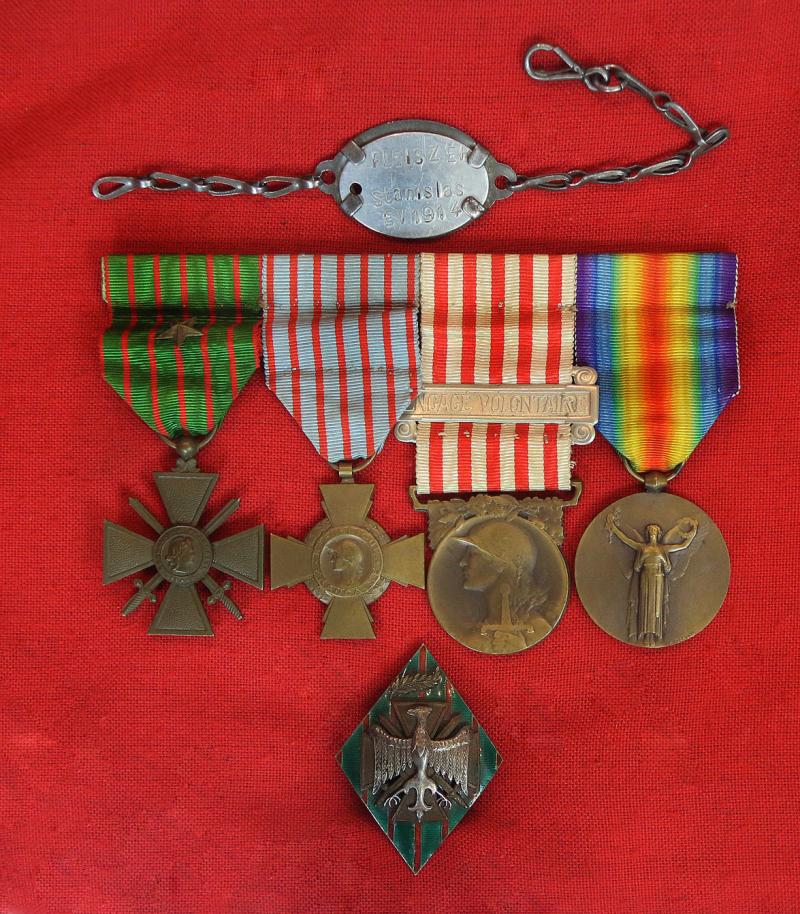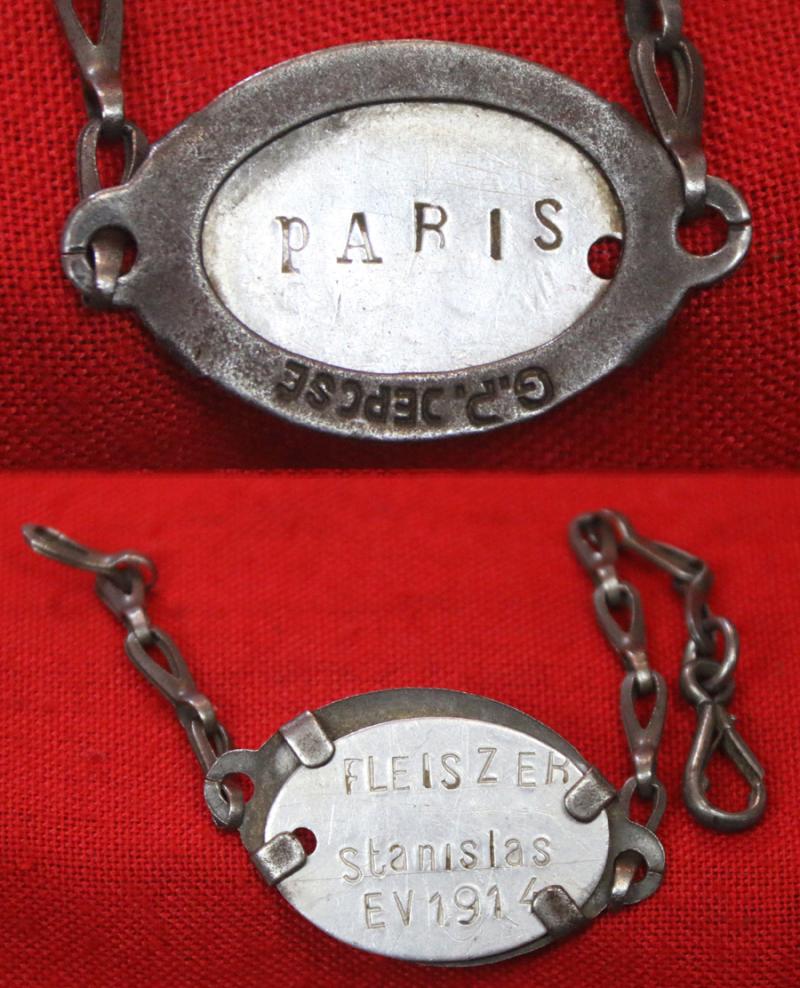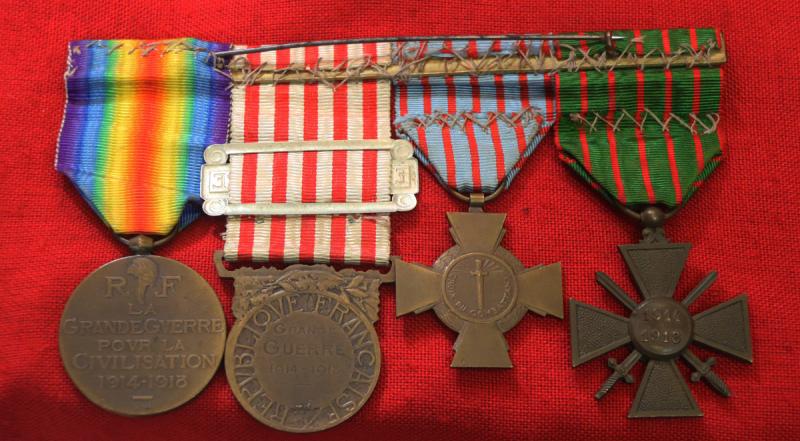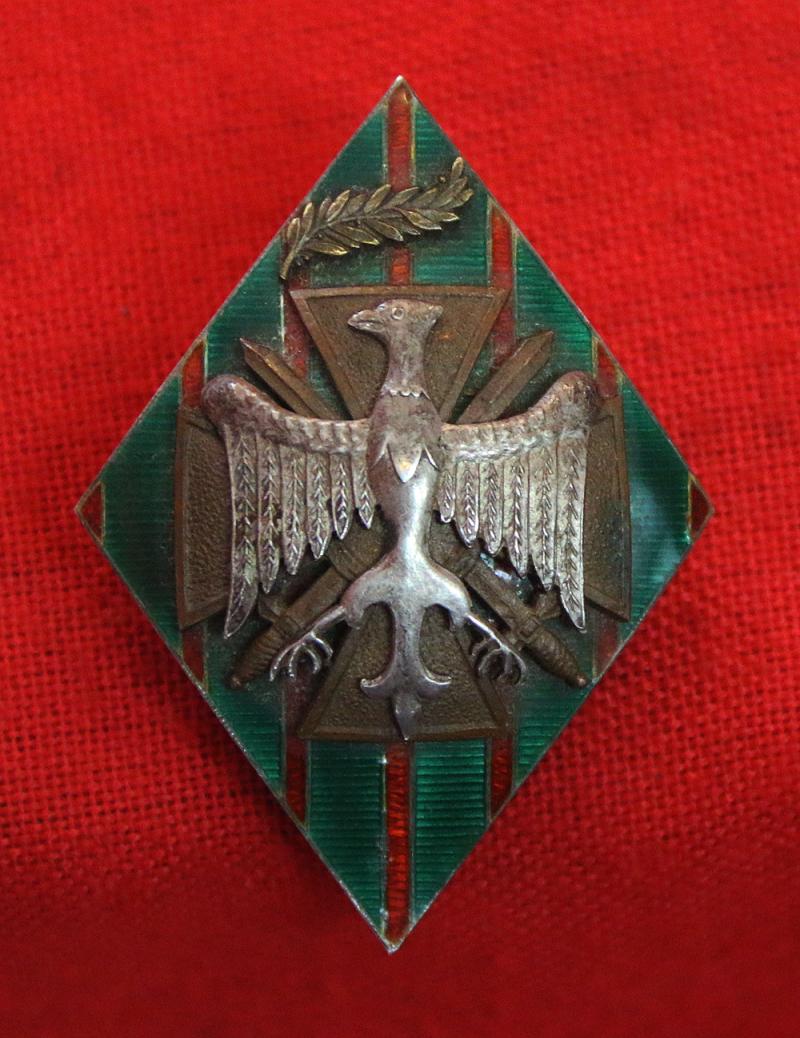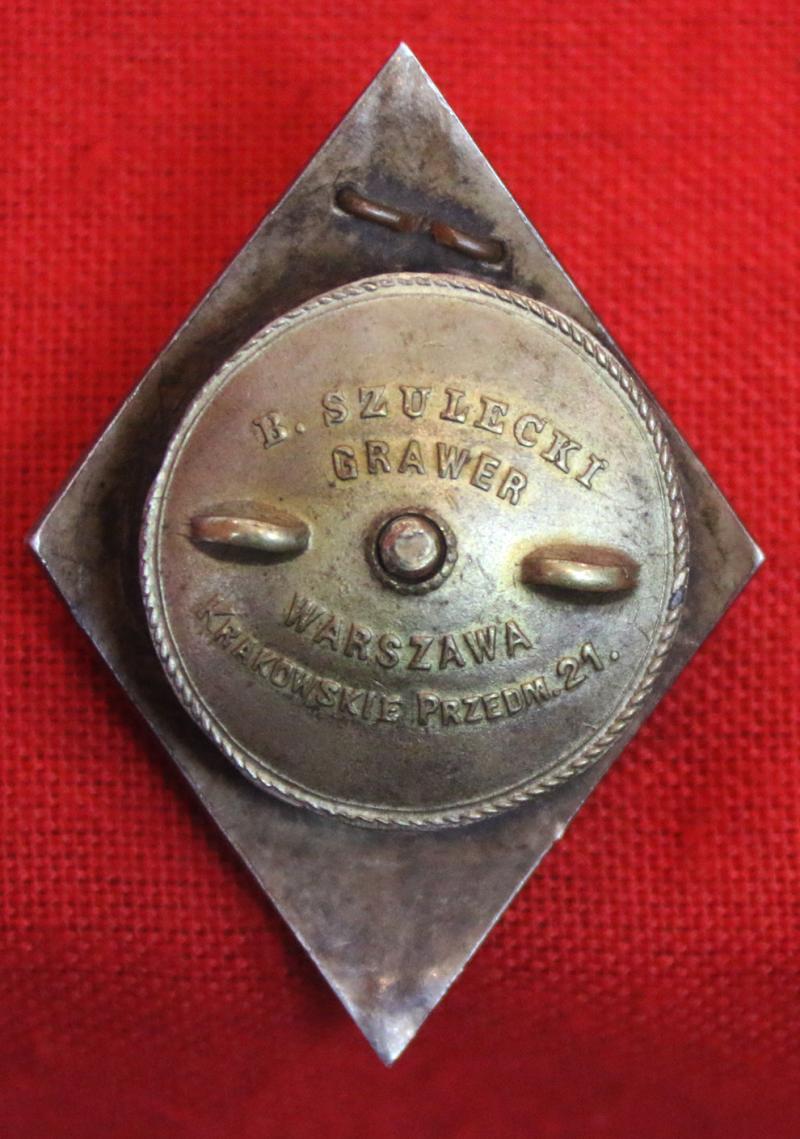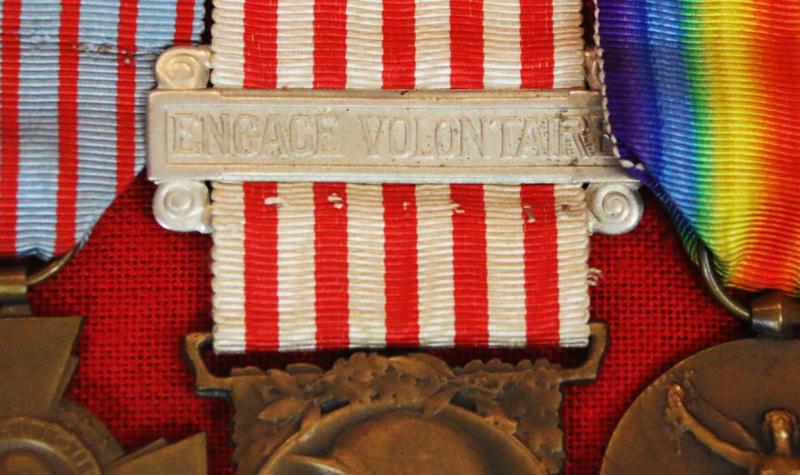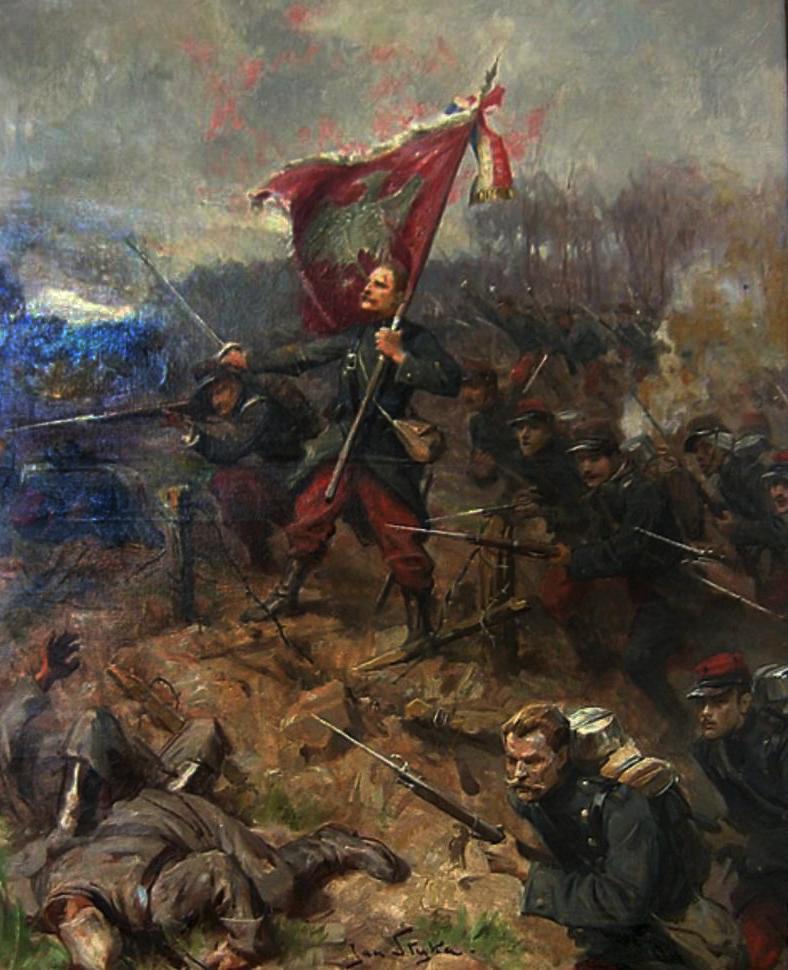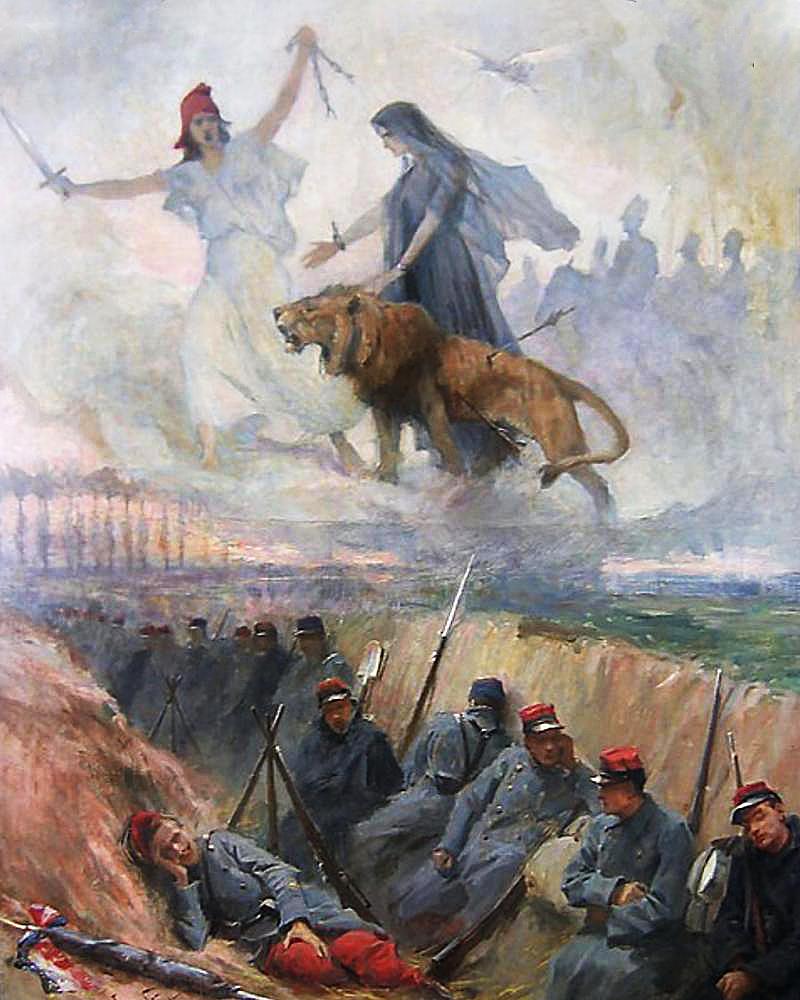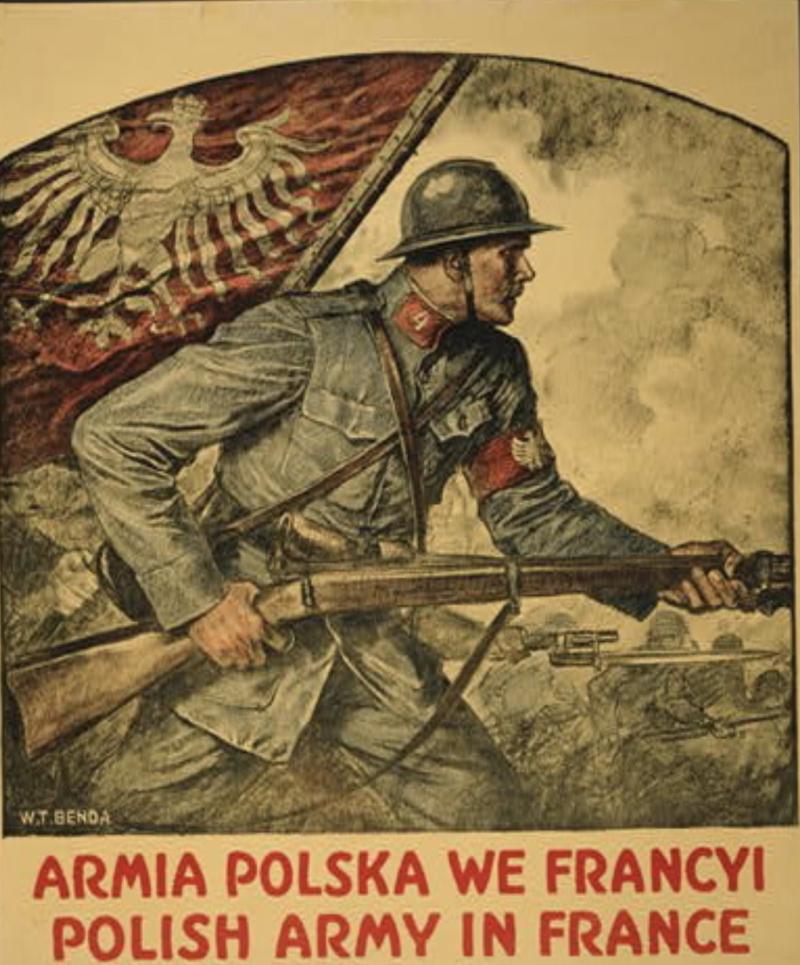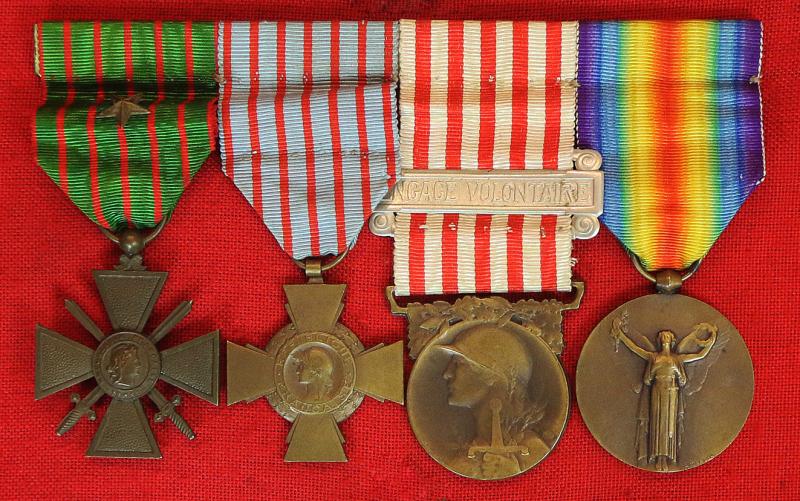Probably The Rarest Polish Hero's Medal Group in The World. French Foreign Legion Group & Badge of the Bayonian Battalion,+ Dog Tag Bracelet. One of the Only 200 Polish Volunteers To Serve In The French Foreign Legion In WW1. Tragically 150 Were KIA 1915
Possibly one of of only a maximum of fifty groups of medals ever awarded to the surviving Heroic Polish volunteers, from this Polish Volunteer Legion, that survived up to the end of 1915, during WW1, and probably the only group still surviving today.
Between 1915, up to November 1918, how many of those 50 survivors, that transferred to the regular Polish Army, may well have also tragically perished in combat in those two years.
So just how few such groups survive till today is anyone's guess, but there only being a maximum of fifty surviving members of the volunteers by the end of 1915, less all the later casualties, it is possible this set is a unique survivor from the history of the National Hero's of the Polish French Foreign Legion Volunteers of WW1.
A plaque dedicated to these most heroic of men is upon the “Tomb of the Unknown Soldier” in Poland
A group of four World War One French Foreign Legion Polish volunteer’s military service medals, the Croix De Guerre and star, Croix du Combattant de 1914-1918, The 1914–1918 Commemorative war medal with foreign volunteer bar, French WWI Victory Medal, with a set of framed matching miniatures, plus the silver and enamel badge of the Polish Foreign Legion volunteers 'Bajończyk Battalion'.
Made of silver and enamel, it is in the form of a breast badge with a screw threaded mount made by the contract maker, B. Szulecki of Warsaw. With its original maker marked, domed, screw threaded mount.
The group, miniatures and badge is complete with the Polish French Foreign Legion Volunteer’s 'named' dog tag bracelet, made and issued in Paris in 1914, and mounted on a wrist bracelet. In October 1915 a Polish Periodical Newspaper Publication in Paris {Polonia : Revue Hebdomadaire Polonaise. A. 2, October 1915, issue no 40} mentions this Polish volunteer’s soldiers name, as he was a Polish Legion Volunteer, and made a listed donation of 5 Francs, on the fifth list of donations received by the administration of the Polonia magazine, for Polish Victims of War.
This group was colloquially called the Bayonian Legion. They formed the 2nd company of the 1st regiment of the Foreign Legion, which received its own banner with the image of an eagle. Command positions were filled by French officers, and some lower functions were in the hands of Poles from the Foreign Legion
Instead of the planned legion ( Legion Bayonne ), two units were formed from Polish volunteers recruited in Paris in August 1914: approximately 200 soldiers were sent to Bayonne for training , hence they were called Bayonians, and approximately 250 soldiers were sent to Rueil, hence their name - Rueilians . While the Bajonians remained a compact unit consisting of one company , the Rueilians were dispersed in various units of the 3rd Marching Regiment of the Foreign Legion. Further recruitment was suspended after a protest from the Russian embassy, which feared that the legion would fight for Poland's independence.
Ultimately, the Bajonians were incorporated into the 2nd March Regiment (commander: Colonel Louis Pein) as part of the 1st Foreign Regiment - as the 2nd company of Battalion C (battalion commander - Major Gustave Alfred Noiré ). Among the volunteers was the son of the famous historian Józef Szujski - Władysław . Initially, Xawery Dunikowski was also a Bajończyk, who, together with Jan Żyznowski , designed the company's banner, presented to the Poles on September 21, 1914 by the mayor of the city, Joseph Garat. The remaining companies of this battalion were composed of Czechs (1), Belgians (3) and Italians (4). Initially, the Bajonians' company was commanded by Reserv. Julien Maxime Stephen "Max" Doumic (who died on November 11, 1914 near Sillery in the Marne department ), and after him by Capt. Juvénal Osmont d'Amilly (died on May 9, 1915 near Neuville-Saint-Vaast in the Pas-de-Calais department ).
The uniform of the Bajonians consisted of red trousers and a red hat, a navy blue sweatshirt and a blue coat . The unit's banner depicted a white eagle without a crown on a red background . Władysław Szujski served as the Bajoni's standard-bearer .
The company was sent to the front on October 22, 1914. Bajoons fought against the Germans on the Western Front in Champagne in 1914–1915. They served near Sillery from November 1914 to April 1915. Then they were sent to the town of Arras , where on May 9 they participated in the attack on the Vimy hills near Neuville-Saint-Vaast. They captured the German positions, at the cost of their success with heavy losses amounting to ¾ of the company's strength.
“The surviving soldiers of the division
were almost completely lost”. “The
commitment and sacrifice of this first rate unit was demonstrated in particular on 9 May 1915, when, placed at the head of the column attacking the “Ouvrages Blancs”, it distinguished itself brilliantly in
capturing enemy positions hitherto defended stubbornly, not stopping until it had fulfilled
its objectives, despite very heavy losses”, the
citation states in the military order of the day.
After this period, only about 50 Bajonians remained alive, and after resting on June 16, they were sent to German positions at the cemetery in Souchez, where other soldiers died, and therefore the unit was disbanded in the summer of 1915. a. On
16 June 1915, the “Bayonnais survivors”
attacked with bayonets to take the cemetery at Souchez.
Their heroism is still documented by the company banner with traces of 34 bullet holes, which is kept in the Polish Army Museum in Warsaw . Some former Bajon soldiers enlisted in French units or went to Russia to fight in Polish troops . The vast majority joined the Polish Army in France, organised since 1917 .
On June 10, 1922, the Minister of Military Affairs awarded the Cross of Valor for the first time "for the bravery and courage shown in the fights against the enemy of the Homeland" to the late. major of the French army Noiret (Noiré), late the captain of the French army, Ossman (Osmont d'Amilly) and three officers, ten non-commissioned officers and thirteen privates - soldiers of the former 1st Polish Division of the "Bajones" .
On September 27, 1922, the Commander-in-Chief and Chief of State Józef Piłsudski awarded the Silver Cross of the Order of Virtuti Militari No. 6155 to the banner of the "former 1st Polish Division in France (Bajones)" and awarded the order of the same class to 18 former soldiers of the Legion, including 6 officers and 12 privates
Bayonne Company
In 1914, Poland had been divided between Russia, Germany and Austria-Hungary for more than a century. At the outbreak of the war, Polish subjects largely expressed loyalty towards their relevant sovereigns. On 31 July 1914 – shortly before the outbreak of the war between Germany and France – Polish emigrants in Paris formed the “Committee of Polish Volunteers for a Service in the French Army”. Since the French authorities considered the Polish issue an internal Russian problem, they permitted the creation of Polish units exclusively within the Foreign Legion.
Although there were sufficient volunteers for two companies, only one – the Bayonneans – went to the front as a complete unit. The French decided to split the second company and allocated its soldiers to other formations. The Bayonneans suffered heavy losses, and in spring 1915 they were ordered to withdrew from the immediate front line.
Thanks to the efforts of the Polish community in France, a monument to the Bajone people was unveiled on the site of the Battle of Arras in La Targette on May 21, 1933. In Bayonne , on July 15, 1934, the "Aux Volontaires Polonaises" plaque was unveiled, and at the Notre-Dame de Lorette necropolis, a similar plaque "In Honor of Polish Volunteers" was unveiled, funded by the French Polish Congress in 1978. A number of names of Bayonians were engraved on the "L'Anneau de la Mémoire" monument. ” unveiled on November 11, 2014 next to the above-mentioned cemetery . In Poland, the Bajonians were commemorated with the inscription "Arras 9 May 1915" on the plaque of the Tomb of the Unknown Soldier in Warsaw . On April 5, 1929, the Minister of Military Affairs gave the 43rd Infantry Regiment the name "43rd Infantry Regiment of the Bajonan Legion" , and on July 25, 1939, changed it to "43rd Rifle Regiment of the Bajonan Legion". Apart from the tombstones and names of the few Bajo people commemorated in cemeteries in France and Poland, the only monument outside the cemetery to a Bajoan, 2nd Lieutenant . Lucjan Malcza is located in his birthplace in the village of Olszowa .
Pictures in the gallery of the Polish Volunteers Bajonian French Foreign Legion
Dream of Polish volunteers in French army 1914
Wladyslaw Szujski death 1914
Code: 25169
15995.00 GBP

